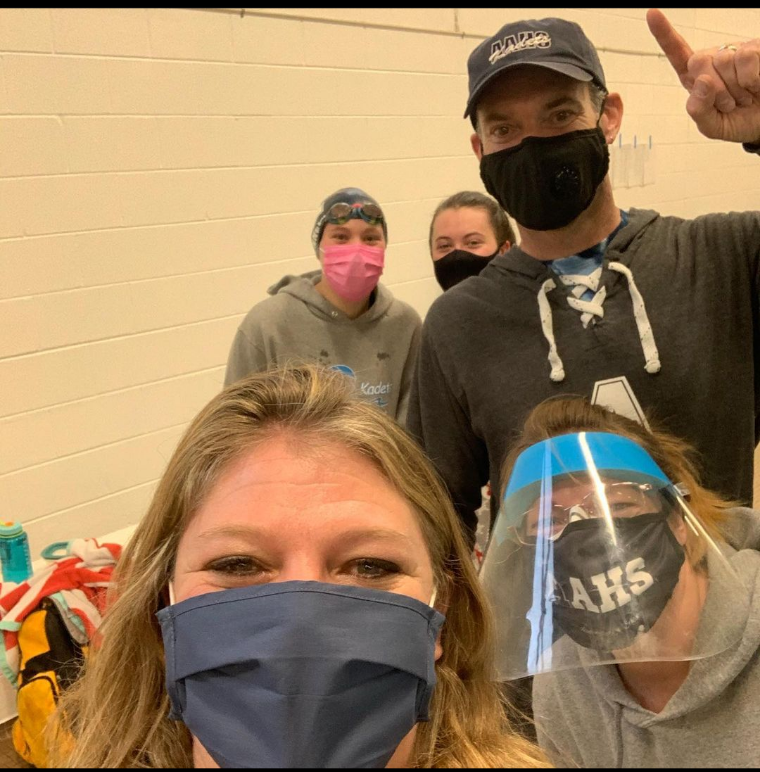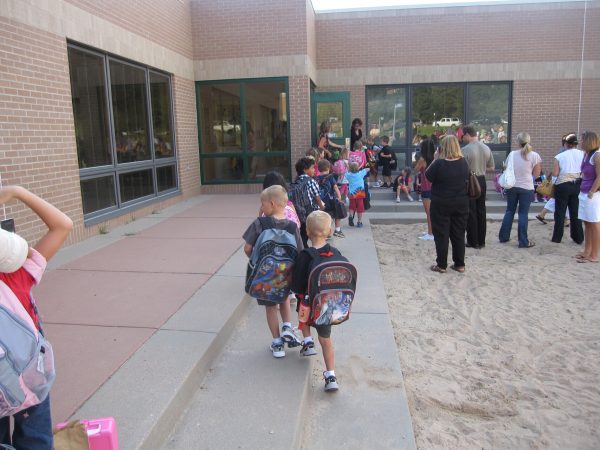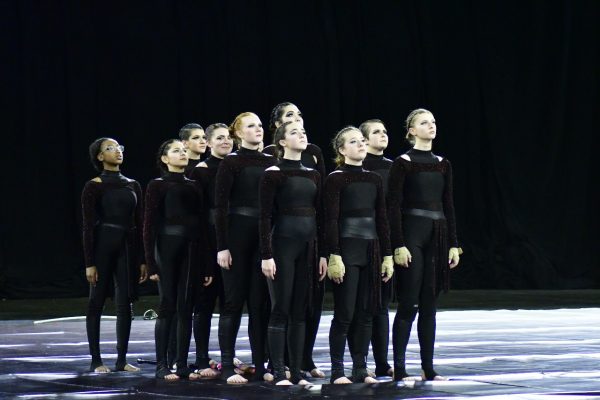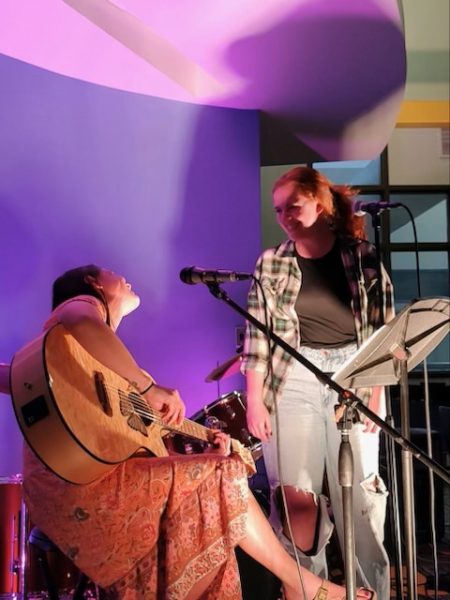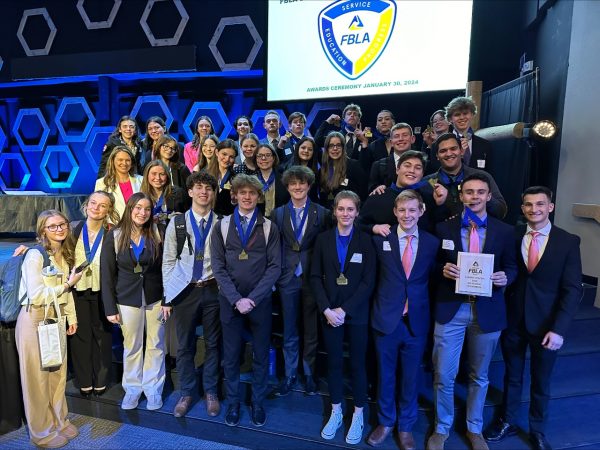Girls Swim & Dive Does A Flipturn On Old Times
The 2019-20 season for Air Academy High School and many other Colorado high school girls swim and dive was the last time a sports season was untainted by the infamous COVID-19 outbreak.
Girls would show up to practice and all walk into the building at the same time, use the same locker room, have a group explanation of warmup and typical team item discussions and then eventually begin practice.
Everyone used to congregate on the same side of the pool with free choice of lanes, and leave and return from the same wall. Sharing kickboards, and even water bottles were common practices. Seeing as everything is doused in chlorine and pool chemicals, this was considered sanitary enough, but certainly not without risk.
By the standards imposed on every aspect of our lives by “higher authority,” many people would have a stressed-induced heart attack reading that.
During this season the girls show up in masks after waiting for the building to clear out and march (socially distanced) into the pool.
Sara Boyer Newell or Kendra Evers survey each athlete with COVID-19 questionnaires/health screenings. Similar to most other AAHS sports, the swim and dive team fills out a document in Google Forms where Newell then has all of the data put into a spreadsheet-style data log.
Once inside the pool, the girls have specially placed marks and positions around the perimeter of the pool, socially distanced of course. Warm-up and the general outline of practice is given by the coaches whilst the athletes line the outside of the pool.
As soon as the masks are ditched in favor of caps and goggles, the girls get into their assigned lanes and get to work. With four girls in each lane, there are four positions to start from, all labeled A, B, C, and D.
In each lane, there is one swimmer on the deep end wall (D), one girl where the depth abruptly changes (C), one at the flags (B), and one at the shallow end wall (A). The three girls who are in the deep end and middle wall swim towards the shallow end, and the leader, on the shallow end wall, all swim towards the deep end.
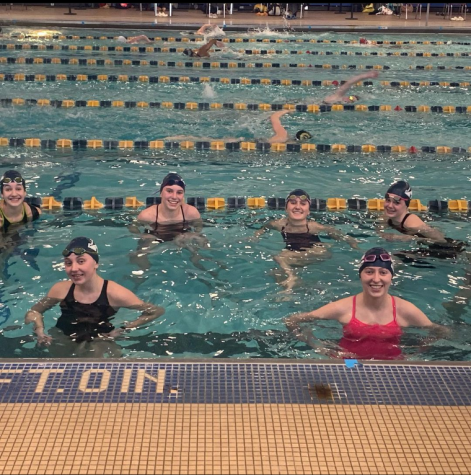
“It ends up being..a full practice of mid-pool ’50s for the swimmers in the middle. We as coaches know that the swimmers likely feel at a disadvantage. We were athletes at one point, we understand what it would be like. On the bright side of that is that it’s possible for each middle swimmer to take that opportunity into their own hands and use it to their advantage in training,” said Coach Scott.
During swim meets only swimmers, coaches, and volunteer timers were allowed to be in the pool. For parents who wanted to watch their swimmer’s meet, they would watch from a Facebook live ran by Coach Scott.
As usual, entries for the meets were due the night before, but this season there were no deck entries or deck (last minute) changes allowed.
Instead of having swimmers roaming about, and flowing to and from behind the blocks and teams alternating lanes, like in a traditional duel meet, the pool was split in half, like hemispheres, and only one heat was allowed per event.
24 swimmers from each team was the maximum for a duel meet this season, and since the traffic flow of swimmers was required to be socially distanced and a whole event to be cleared out before the next event. This left the transition time between events lengthier, but since there was only one heat per event the total time of each meet remained essentially unchanged from past years, according to Coach Scott.
“In past years, some meets used to have lots of energy from swimmers and parents, and sometimes the swimmers had to create it. This year, the girls just had to create the energy each meet,” said Coach Scott.
Luckily none of the girls got sick or needed to be tested this season, as one swimmer with a fever cost Rampart’s girls’ team 10 days due to quarantine. Per CHSAA rules, if one athlete is sick, or requires a COVID test, the entire team needs to quarantine for 10 days. In 10 days there is a lot of training and time in the water that is lost and could potentially throw away a season’s work.
A dramatic change from this season to last is that the State meet, no longer will be prelims and finals, relying on qualifying times, this year each event will only take the top 20 times in the state. Additionally, no teams will stay in hotels, and nobody but the top 20 swimmers per event will be allowed in the pool and on deck.
Instead of the state team finding a place to sit together and be between races, swimmers will have to go sit outside in cars or socially distanced in between events, and then come in to warm up, race, and cool down, only to leave again so that the next group may enter.
“Much of the foundation of the sport remains intact, but it is unfortunate that some of the excitement and experiences of the State meet have been cut out,” said Coach Scott.
The 2021 girls’ swim and dive season, upfront, seems to have the usual pandemic draconian style restrictions when in reality the core of the sport remains untouched. Coach Scott notes that he will not be changing the system for boys season unless Colorado or the Colorado Activity Association’s rules change

Howdy!! I'm Alex Maline, and this will be my second year on the Jetstream. This time around I am an editor and I'm excited to see how this year turns out!...



